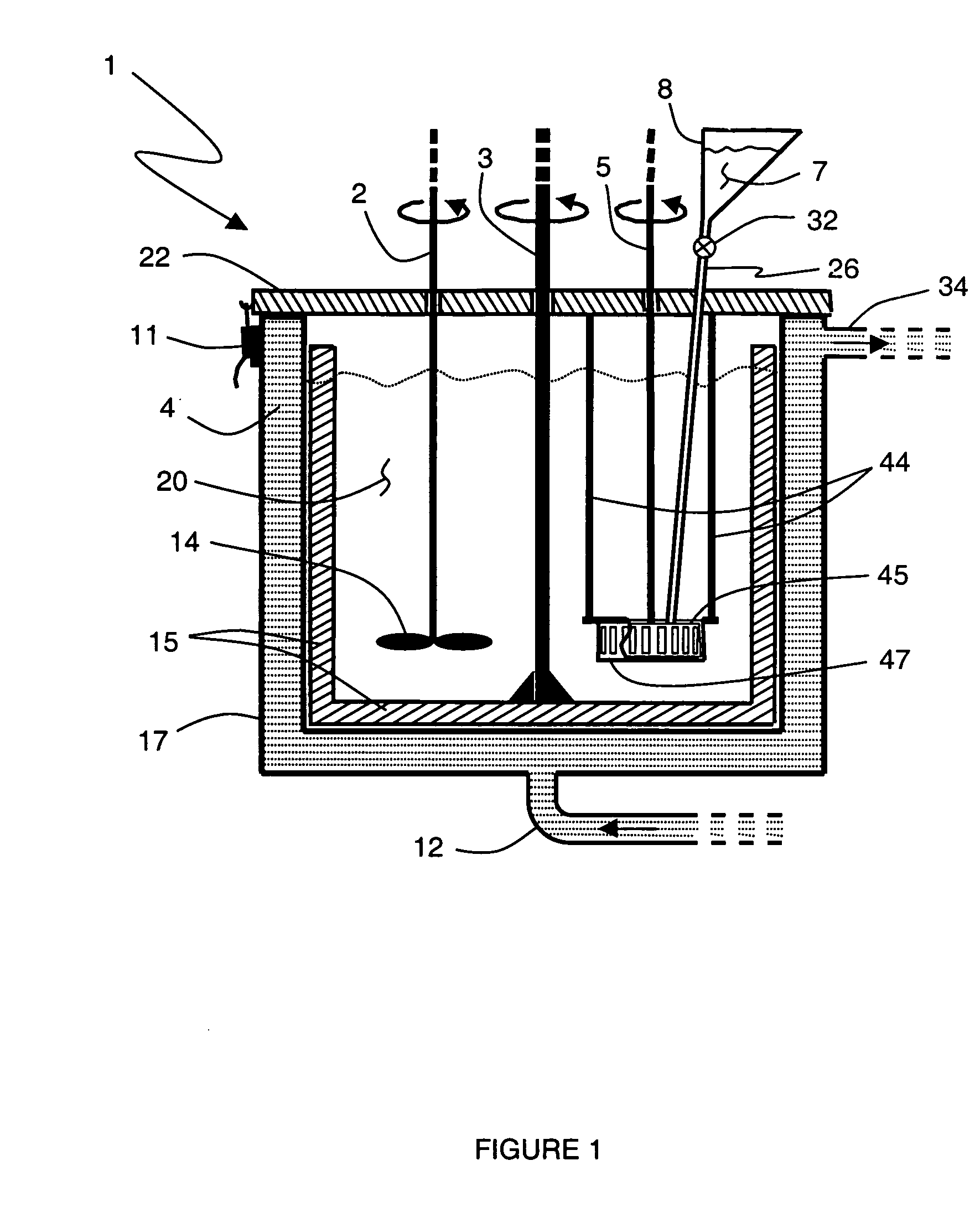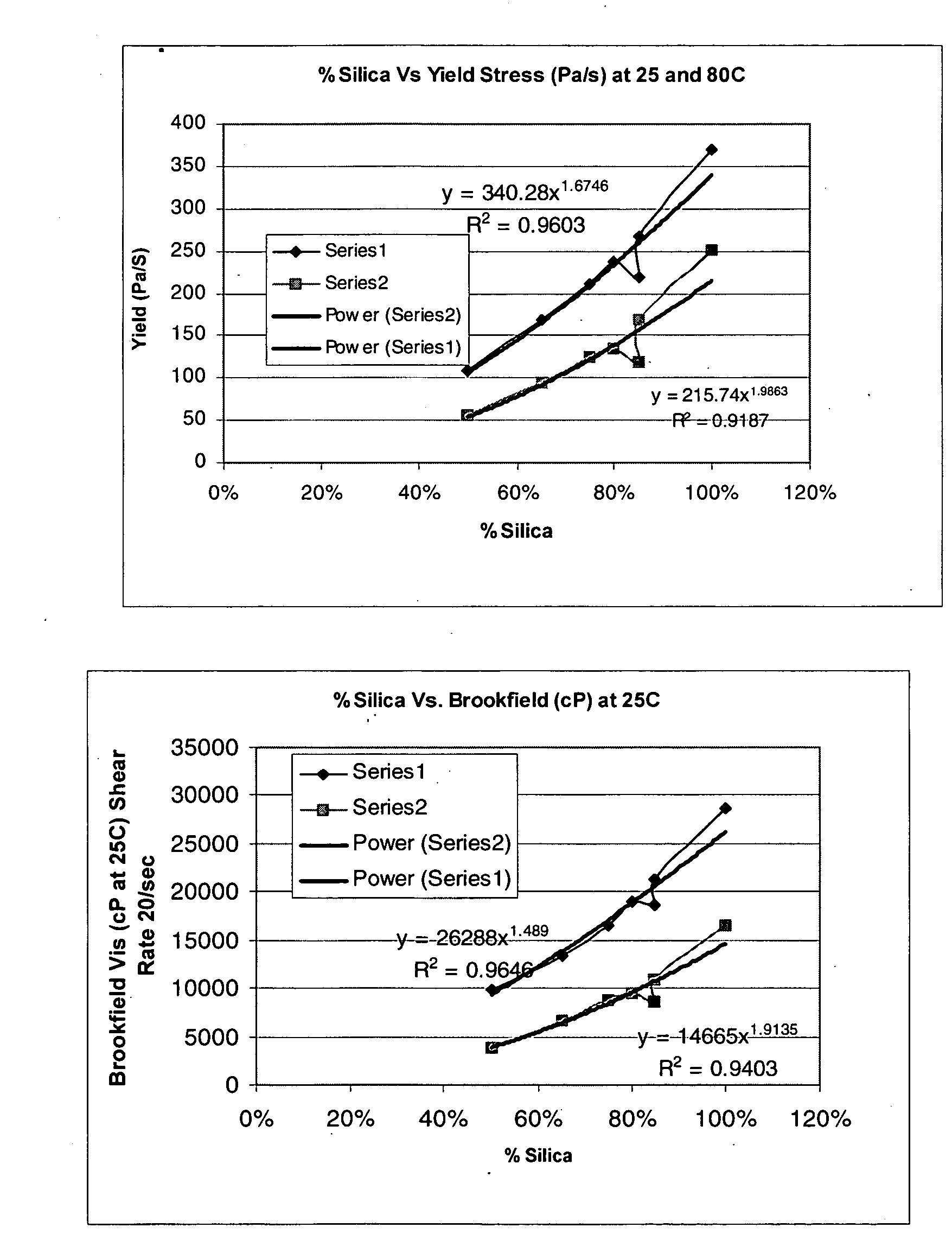Process and compositions for making optical fiber gels
a technology of optical fiber gel and composition, applied in the field of gels, can solve the problem of difficult uniform dispersal of colloidal materials, and achieve the effect of low batch-to-batch variation and consistent viscosity
- Summary
- Abstract
- Description
- Claims
- Application Information
AI Technical Summary
Benefits of technology
Problems solved by technology
Method used
Image
Examples
Embodiment Construction
[0008] The gel composition generally comprises a base oil, a high molecular weight polymer, a colloidal silica, and optionally coupling agents and additives such as antioxidants, antiwear agents, antifoam, and hydrogen absorbing agents.
[0009] The base oil can be any of the American Petroleum Institute's (API) Group I, Group II, Group III, Group IV, or Group V basestock. Typical base oils include mineral oils, hydrotreated mineral oils, PAOs, vegetable oils and synthetic esters. Specific examples of this type of component include hydrocracked mineral oils, poly (alpha olefin), vegetable oils and other synthetic oils such as esters, glycols and polybutene.
[0010] The amounts of base oil in the compositions of the present invention are generally from about 80 to about 96 weight percent, more desirably from about 86 to about 95 and more preferably from about 88 to about 93 weight percent.
[0011] The high molecular weight polymer can be selected ...
PUM
| Property | Measurement | Unit |
|---|---|---|
| temperature | aaaaa | aaaaa |
| weight percent | aaaaa | aaaaa |
| weight percent | aaaaa | aaaaa |
Abstract
Description
Claims
Application Information
 Login to View More
Login to View More - R&D
- Intellectual Property
- Life Sciences
- Materials
- Tech Scout
- Unparalleled Data Quality
- Higher Quality Content
- 60% Fewer Hallucinations
Browse by: Latest US Patents, China's latest patents, Technical Efficacy Thesaurus, Application Domain, Technology Topic, Popular Technical Reports.
© 2025 PatSnap. All rights reserved.Legal|Privacy policy|Modern Slavery Act Transparency Statement|Sitemap|About US| Contact US: help@patsnap.com


